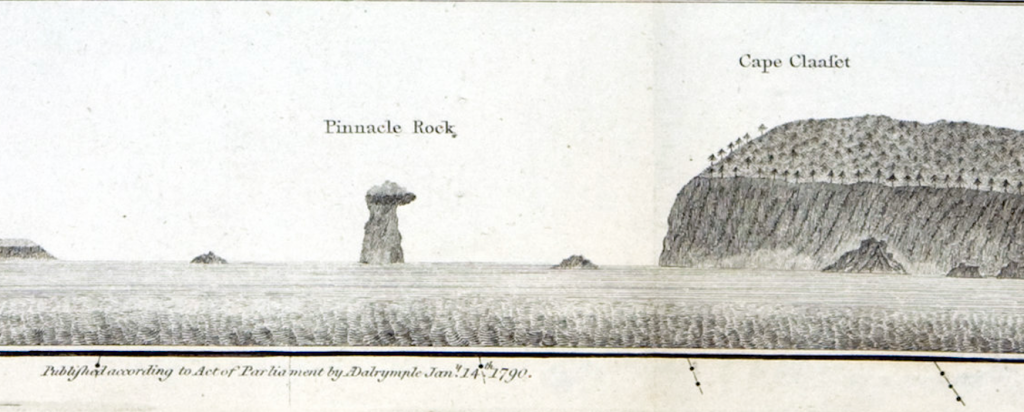I was recently down in Astoria, Oregon, where I visited the fabulous Columbia River Maritime Museum. In addition, to great displays on the mouth of the Columbia, the legendary “Graveyard of the Pacific,” the museum has a fine collection of early maps of the Pacific Coast, showing the river and further north. Several were quite fascinating, particularly one from 1794, which depicts James Cook’s third and final voyage along the coast. It was drawn by William Faden.

Not only does it show the dates of when Cook sailed but it also illustrates some of the great stories associated with early exploration.
1. Puget Sound does not exist as no European had yet to sail into the inland sea, though by the time of the publication of the map George Vancouver had made it down into what he called Puget’s Sound.
2. The North Sea of Valerianos Apostolos – He is the Greek pilot who may or may not have sailed into what became known as the Strait of Juan de Fuca in 1592. In 1596, Valerianos (most historians switch the order of his names) told English entrepreneur Michael Lok about sailing for many days into a strait at about 47 degrees north latitude. Ever since then, people have debated whether the Greek did so.
3. Fucas Pillar – One key feature that Valerianos mentioned was a pillar at the mouth of the strait. In 1788, British fur trader Charles Duncan described the pillar, which was then put onto maps.

4. No Vancouver Island – Spanish explorers were the first to sail around the island, which was initially known as Quadra and Vancouver’s Island. Juan Francisco de la Bodega y Quadra sailed into what is now Nootka Sound in 1792.
5. What isn’t shown is that when Cook sailed by the Strait of Juan de Fuca in 1778, he wrote in his journal “It is in the very latitude we were now in where geographers have placed the pretended Strait of Juan de Fuca but we saw nothing like it; nor is there the least probability that iver any such thing exhisted.” Obviously, this map reflects the findings of Duncan.